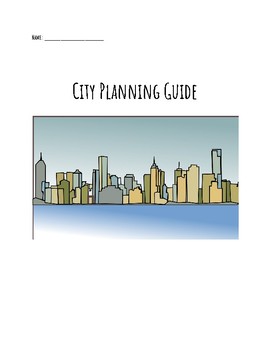City Planning Arrays and Multiplication Project
Kelly Heyen
137 Followers
Grade Levels
2nd - 4th, Homeschool
Subjects
Resource Type
Standards
CCSS2.MD.B.5
CCSS2.MD.C.8
CCSS3.MD.C.5
CCSS3.MD.C.5a
CCSS3.MD.C.5b
Formats Included
- PDF
Kelly Heyen
137 Followers
Description
This fun individual or group project provides a creative way for students to apply their knowledge of arrays, area, and multiplication! The guide can be printed and handed to students along with a sheet of graph paper or graph posterboard-- it walks them through the process, step-by-step! The students will...
- Discuss / reflect on questions about city systems in order to plan what their cities need to include, and where different areas should be located.
- Plan out their cities to fit the guidelines in the packet and a total budget set by the teacher. (I set a budget of $20,000.00 when I tested the project, but you can play around with the amount to make it easier or more challenging!)
- Apply their knowledge of arrays to create a blueprint of their city.
- Apply their knowledge of arrays, area, and multiplication to calculate the cost of each building/area, and the total cost of their city.
My students worked in pairs for this project, and absolutely loved it! I have tested this activity in a 3rd grade general education classroom, and with gifted and talented 2nd grade students. Students who have not been introduced to area and/or double-digit multiplication can use the repeated addition strategy to calculate their total costs.
Total Pages
Answer Key
N/A
Teaching Duration
N/A
Report this resource to TPT
Reported resources will be reviewed by our team. Report this resource to let us know if this resource violates TPT’s content guidelines.
Standards
to see state-specific standards (only available in the US).
CCSS2.MD.B.5
Use addition and subtraction within 100 to solve word problems involving lengths that are given in the same units, e.g., by using drawings (such as drawings of rulers) and equations with a symbol for the unknown number to represent the problem.
CCSS2.MD.C.8
Solve word problems involving dollar bills, quarters, dimes, nickels, and pennies, using $ and ¢ symbols appropriately. Example: If you have 2 dimes and 3 pennies, how many cents do you have?
CCSS3.MD.C.5
Recognize area as an attribute of plane figures and understand concepts of area measurement.
CCSS3.MD.C.5a
A square with side length 1 unit, called “a unit square,” is said to have “one square unit” of area, and can be used to measure area.
CCSS3.MD.C.5b
A plane figure which can be covered without gaps or overlaps by 𝘯 unit squares is said to have an area of 𝘯 square units.





